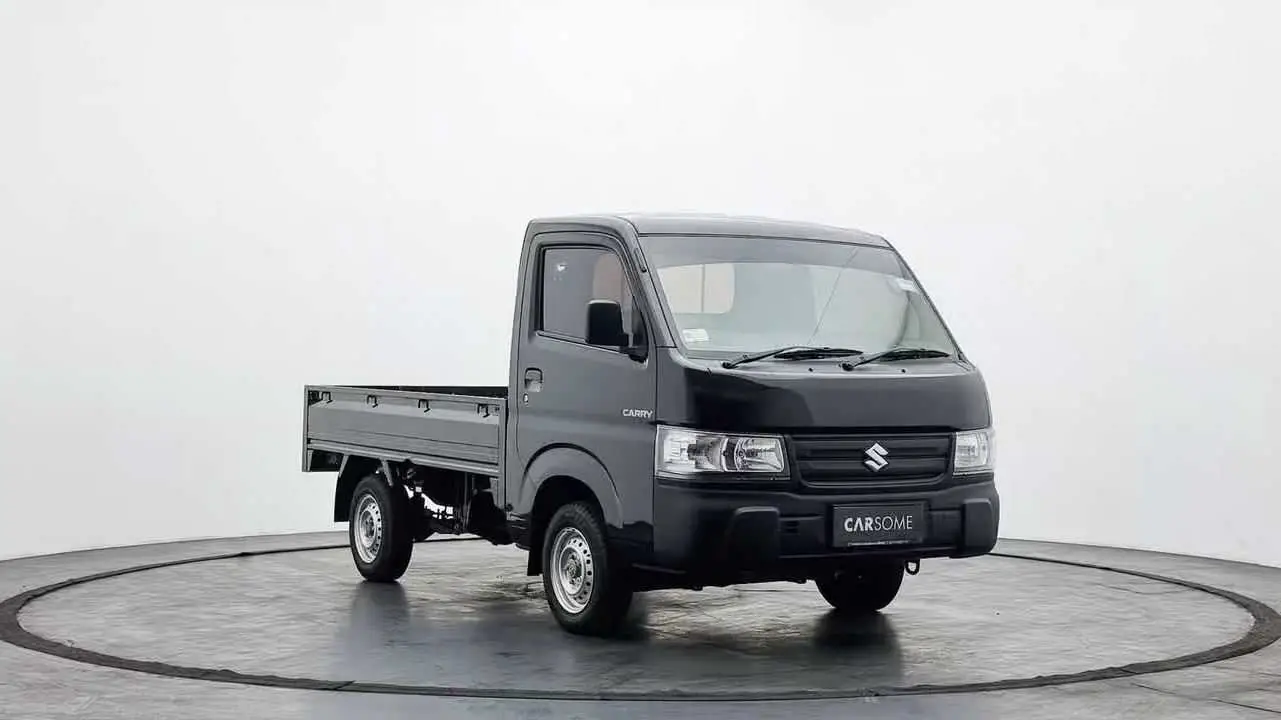Suzuki New CARRY 2019 Tyre Inspection User Manual
Tyre Inspection
Inspect your vehicle’s tyres at least once a month or before the long trip by performing the following checks:
Measure the air pressure with a tyre gauge. Adjust the pressure if necessary. Remember to check the spare tyre, too.
WARNING
Air pressures should be checked when the tyres are cold or you may get inaccurate readings.
Check the inflation pressure from time to time while inflating the tyre gradually, until the specified pressure is obtained. Never underinflate or over-inflate the tyres.
Underinflation can cause unusual handling characteristics or can cause the rim to slip on the tyre bead, resulting in an accident or damage to the tyre or rim. Overinflation can cause the tyre to burst, resulting in personal injury. Overinflation can also cause unusual handling characteristics which may result in an accident.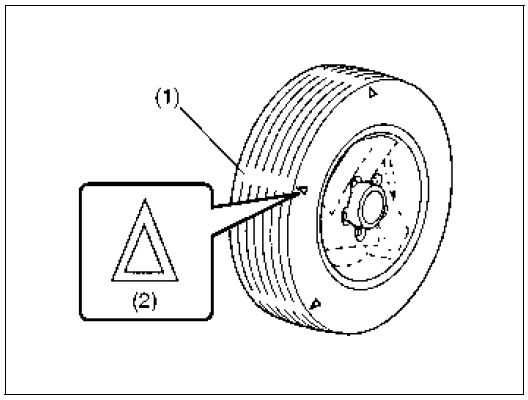
- Tread wear indicator
- Indicator location mark
- Check that the depth of the tread groove is more than 1.6 mm (0.06 in.). To help you check this, the tyres have moulded-in tread wear indicators in the grooves. When the indicators appear on the tread surface, the remaining depth of the tread is 1.6 mm (0.06 in.) or less and the tyre should be replaced.
- Check for abnormal wear, cracks and damage. Any tyres with cracks or other damage should be replaced. If any tyres show abnormal wear, have them inspected by a SUZUKI dealer or a qualified workshop.
CAUTION
Hitting curbs and running over rocks can damage tyres and affect wheel alignment. Have tyres and wheel alignment checked periodically by a SUZUKI dealer or a qualified work-shop.
- Check for loose wheel nuts.
- Check that there are no nails, stones or other objects sticking into the tyres.
NOTICE
Replacing the original tyres with tyres of a different size may result in false speedometer or odometer readings. Check with a SUZUKI dealer or a qualified workshop before purchasing replacement tyres that differ in size from the original tyres.
NOTE:
Your SUZUKI vehicle is equipped with tyres which are all the same type and size. This is important to ensure proper steering and handling of the vehicle. Never mix tyres of different size or type on the four wheels of your vehicle. The size and type of tyres used should be only those approved by SUZUKI as standard or optional equipment for your vehicle.
- Replacing the wheels and tyres equipped on your vehicle with certain combinations of aftermarket wheels and tyres can significantly change the steering and handling characteristics of your vehicle.
- Therefore, use only those wheel and tyre combinations approved by SUZUKI as standard or optional equipment for your vehicle.
Tyre Rotation
5-tyre rotation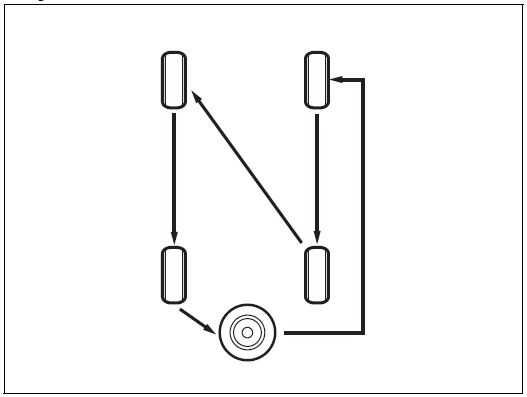
4-tyre rotation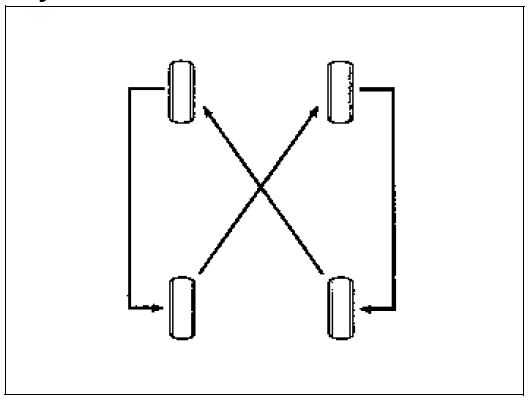
To avoid uneven wear of your tyres and to prolong their life, rotate the tyres as illustrated. Tyres should be rotated every 10000 km (6000 miles). After rotation, adjust front and rear tyre pressures to the specification listed in your vehicle’s Tyre Information Label.
Battery
WARNING
Batteries produce flammable hydrogen gas. Keep flames and sparks away from the battery or an explosion may occur. Never smoke when working in the vicinity of the battery.
When checking or servicing the battery, disconnect the negative cable. Be careful not to cause a short circuit by allowing metal objects to contact the battery posts and the vehicle at the same time. To avoid harm to yourself or dam-age to your vehicle or battery, follow the jump-starting instructions in the “EMERGENCY SERVICE” sec-tion if it is necessary to jump-start your vehicle.Diluted sulfuric acid spilled from battery can cause blindness or severe burns. Use proper eye protection and gloves. Flush eyes or body with ample water and get medical care immediately if suf-fered. Keep batteries out of reach of children.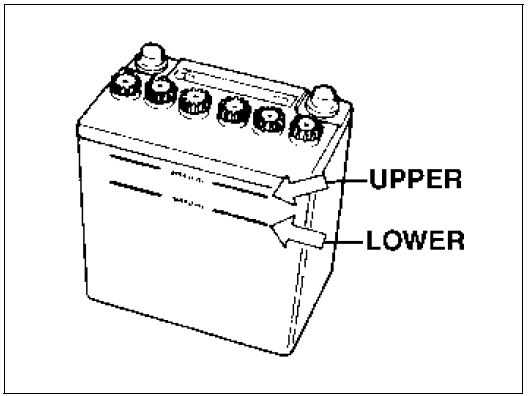
For a maintenance-free battery (cap-less type), you need not add water. For traditional type battery, which has water filler caps, the level of the battery fluid must be kept between the “UPPER” and the “LOWER” level lines at all times. If the level is found to be below the “LOWER” level line, add distilled water to the “UPPER” level line. You should periodically check the battery, battery terminals, and battery hold-down bracket for corrosion. Remove corrosion using a stiff brush and ammonia mixed with water, or baking soda mixed with water. After removing corrosion, rinse with clean water. If your vehicle is not going to be driven for a month or longer, disconnect the cable from the negative terminal of the battery to help prevent discharge.
Replacement of the Battery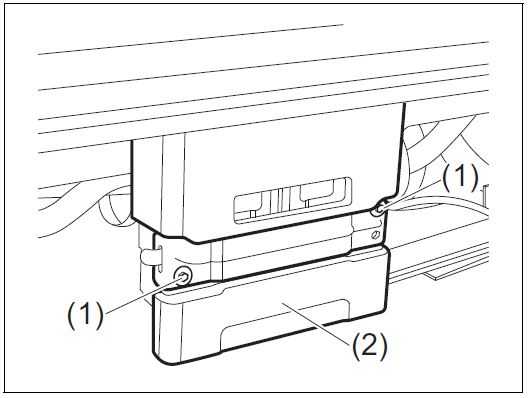
- Remove the bolts
- and then remove the battery cover (2).
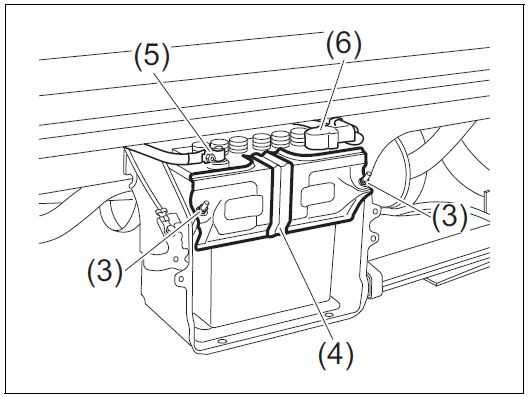
- Loosen the nuts (3) and then remove the bracket (4).
- Disconnect the negative cable (5).
- Disconnect the positive cable (6).
To install the battery:
Install the battery in the reverse order of removal.
NOTE:
- When the battery is disconnected, some of the vehicle’s functions will be initialized and/or deactivated.
- These functions must be required to reset after the battery is reconnected.
- Do not disconnect the battery terminals for at least one minute after the ignition switch is turned off.
WARNING
Batteries contain toxic substances including sulfuric acid and lead. They could have potentially negative consequences for the environment and human health. Used batteries must be disposed of or recycled according to applicable rules or regulations and must not be disposed of with ordinary household trash. Make sure not to tip over the battery when you remove it from the vehicle. Other-wise, sulfuric acid could run out and you might get injured.
NOTICE
After stopping the engine, the controller and system are operated for a while. Therefore, before removing the battery, wait for more than one minute after turning the ignition switch to “OFF”.
-
Reference Links
View Full User Guide: Suzuki New CARRY 2019 User Manual
Download Manuals: https://suzuki-aftersales.net/manuals

